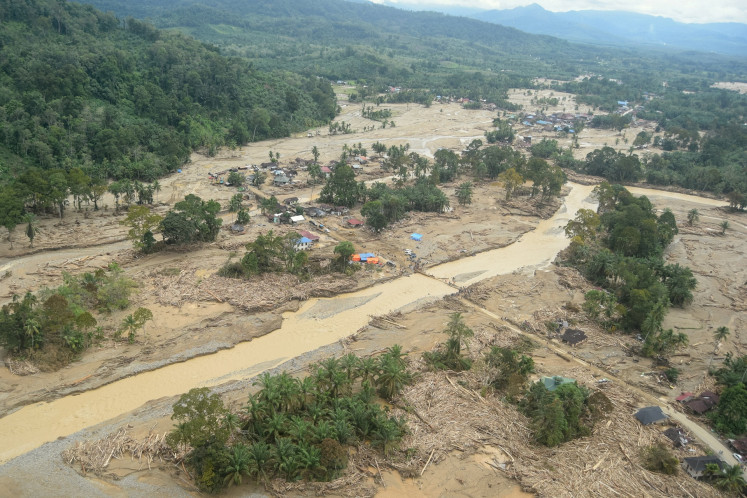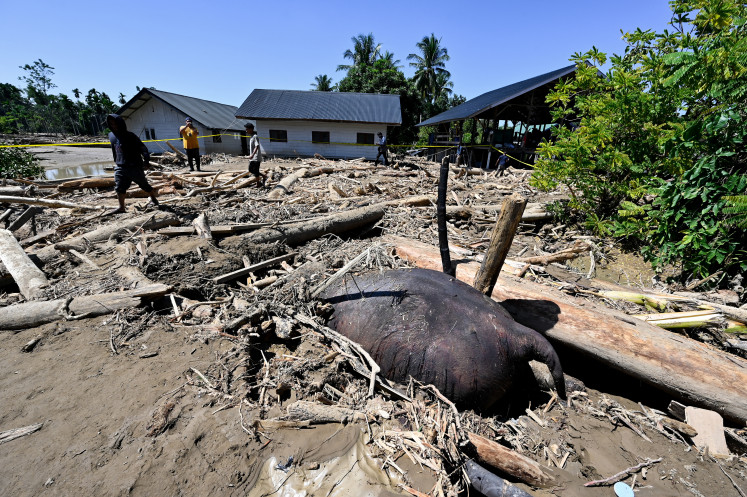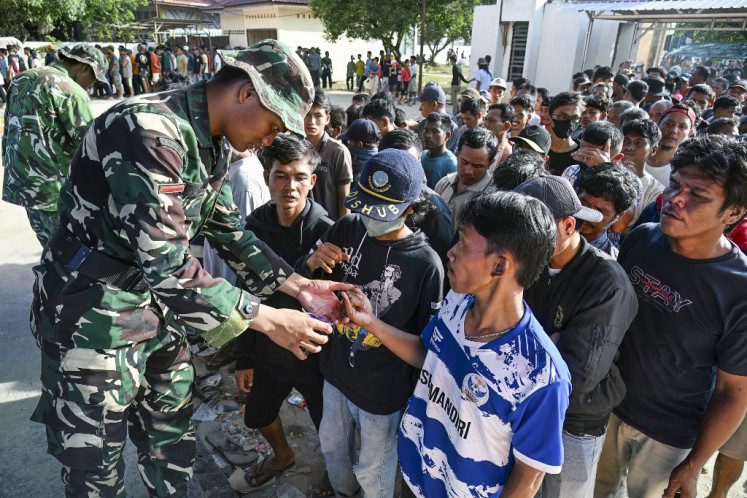Popular Reads
Top Results
Can't find what you're looking for?
View all search resultsPopular Reads
Top Results
Can't find what you're looking for?
View all search resultsGreen project helps emission reduction efforts in Papua
A European Union (EU) funded green project called âThe Participatory Monitoring and Evaluation by Civil Society on Land-use Planning for Low Emissions Development Strategy (ParCiMon)â has helped local residents in Mulima village, Libarek district, Jayawijaya regency, Papua, to better understand the need to reduce greenhouse gas emissions by teaching them how to calculate carbon stocks and learn what activities can help reduce emissions
Change text size
Gift Premium Articles
to Anyone
A
European Union (EU) funded green project called 'The Participatory Monitoring and Evaluation by Civil Society on Land-use Planning for Low Emissions Development Strategy (ParCiMon)' has helped local residents in Mulima village, Libarek district, Jayawijaya regency, Papua, to better understand the need to reduce greenhouse gas emissions by teaching them how to calculate carbon stocks and learn what activities can help reduce emissions.
'We, local residents, have asked facilitators of the program to teach us how to calculate carbon emissions in our area and we will later disseminate this knowledge to younger generations in this village,' said Titus Himan, one of ParCiMon working group members, on Friday.
He was speaking during the visit of EU Ambassador to Indonesia Olof Skoog, who stopped at Mulima village as part of his initial tour to Papua from Jan.13 to17 after being assigned to the post at the beginning of the month.
During the project, Mulima villagers were introduced to a number of economic activities such as farming honey bees, breeding pigs, planting fruit and breeding fish in ponds as well as cultivating vegetable crops to meet their daily needs or to market for an income.
Titus said these activities would hopefully support the government's carbon emission reduction programs as the locals would no longer need to fell trees to meet their basic needs.
In Jayawijaya regency, ParCiMon through its local partner World Agroforestry Center (ICRAF) Indonesia has developed 10 emission reduction strategies. Local communities, for instance, can participate to prevent declines in carbon stocks by maintaining protected forests and Lorentz National Park conservation areas in line with their functions. They can also increase carbon stocks by, among other things, maintaining the function of primary and secondary forests, planting ulin (ironwood) trees, cultivating coffee plants and fruit crops as well as planting cassowary trees on idle land, shifting it into secondary forests.
'The 10 emission reduction strategies can run successfully, emissions in Jayawijaya regency can be reduced by 50.18 percent by 2020, or exceed the national target of 41 percent,' the head of the Low Emission Development Planning, Monitoring and Evaluation Working Group, Dadi Permadi, said. (ebf)(+++)










